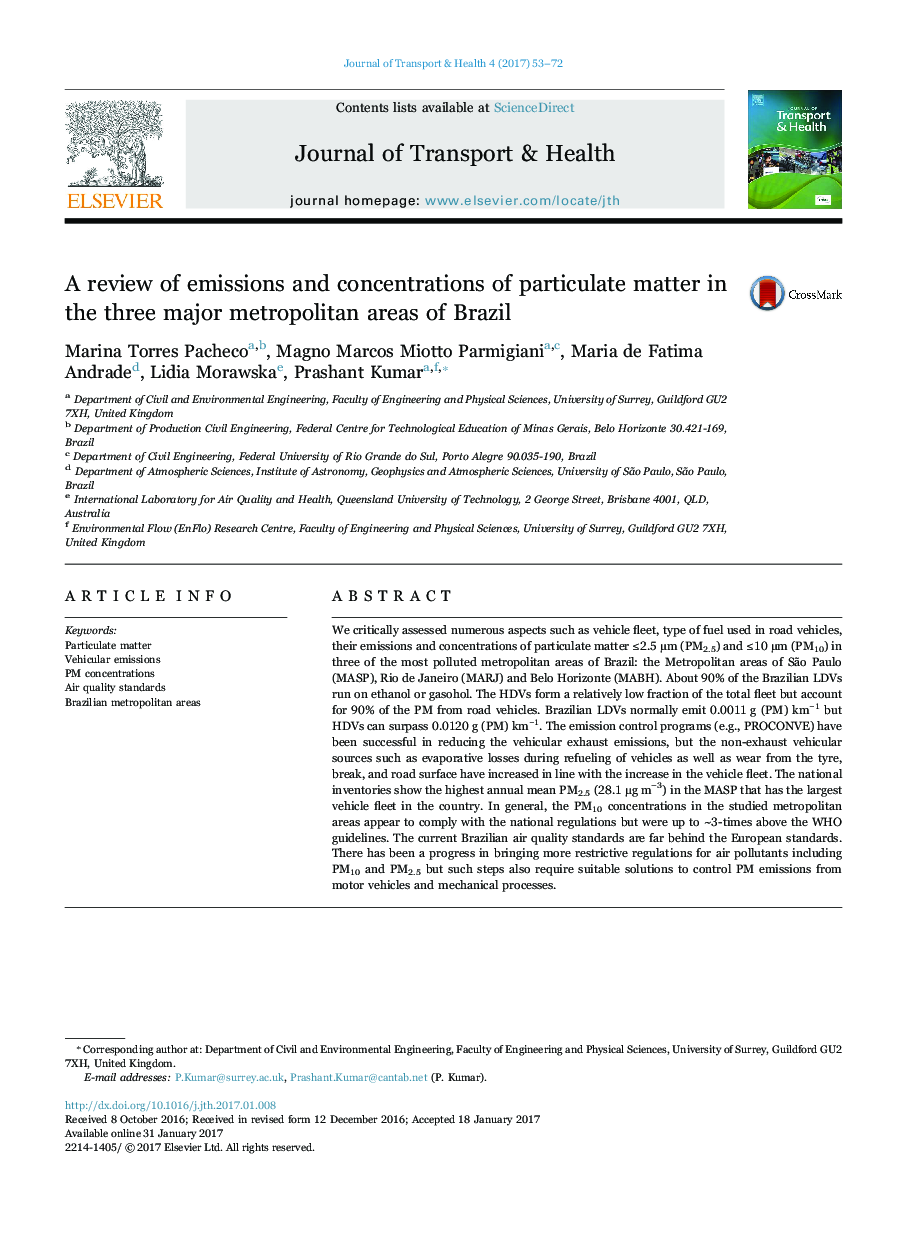| کد مقاله | کد نشریه | سال انتشار | مقاله انگلیسی | نسخه تمام متن |
|---|---|---|---|---|
| 5117860 | 1485457 | 2017 | 20 صفحه PDF | دانلود رایگان |
- Emissions and concentrations in three Brazilian metropolitan areas are reviewed.
- In 2014, vehicular emissions contributed 34% of the total Brazilian PM2.5 emissions.
- Non-exhaust sources could represent 90% of the Brazilian PM emissions from 2020 onwards.
- Brazilian cities have relatively relaxed guidelines of PM concentration compared with WHO.
- Studied metropolitan areas showed up to 3-fold high concentrations above WHO guidelines.
We critically assessed numerous aspects such as vehicle fleet, type of fuel used in road vehicles, their emissions and concentrations of particulate matter â¤2.5 µm (PM2.5) and â¤10 µm (PM10) in three of the most polluted metropolitan areas of Brazil: the Metropolitan areas of São Paulo (MASP), Rio de Janeiro (MARJ) and Belo Horizonte (MABH). About 90% of the Brazilian LDVs run on ethanol or gasohol. The HDVs form a relatively low fraction of the total fleet but account for 90% of the PM from road vehicles. Brazilian LDVs normally emit 0.0011 g (PM) kmâ1 but HDVs can surpass 0.0120 g (PM) kmâ1. The emission control programs (e.g., PROCONVE) have been successful in reducing the vehicular exhaust emissions, but the non-exhaust vehicular sources such as evaporative losses during refueling of vehicles as well as wear from the tyre, break, and road surface have increased in line with the increase in the vehicle fleet. The national inventories show the highest annual mean PM2.5 (28.1 μg m-3) in the MASP that has the largest vehicle fleet in the country. In general, the PM10 concentrations in the studied metropolitan areas appear to comply with the national regulations but were up to ~3-times above the WHO guidelines. The current Brazilian air quality standards are far behind the European standards. There has been a progress in bringing more restrictive regulations for air pollutants including PM10 and PM2.5 but such steps also require suitable solutions to control PM emissions from motor vehicles and mechanical processes.
366
Journal: Journal of Transport & Health - Volume 4, March 2017, Pages 53-72
